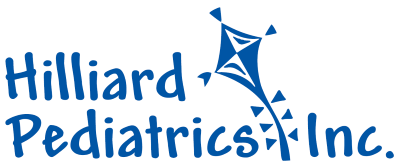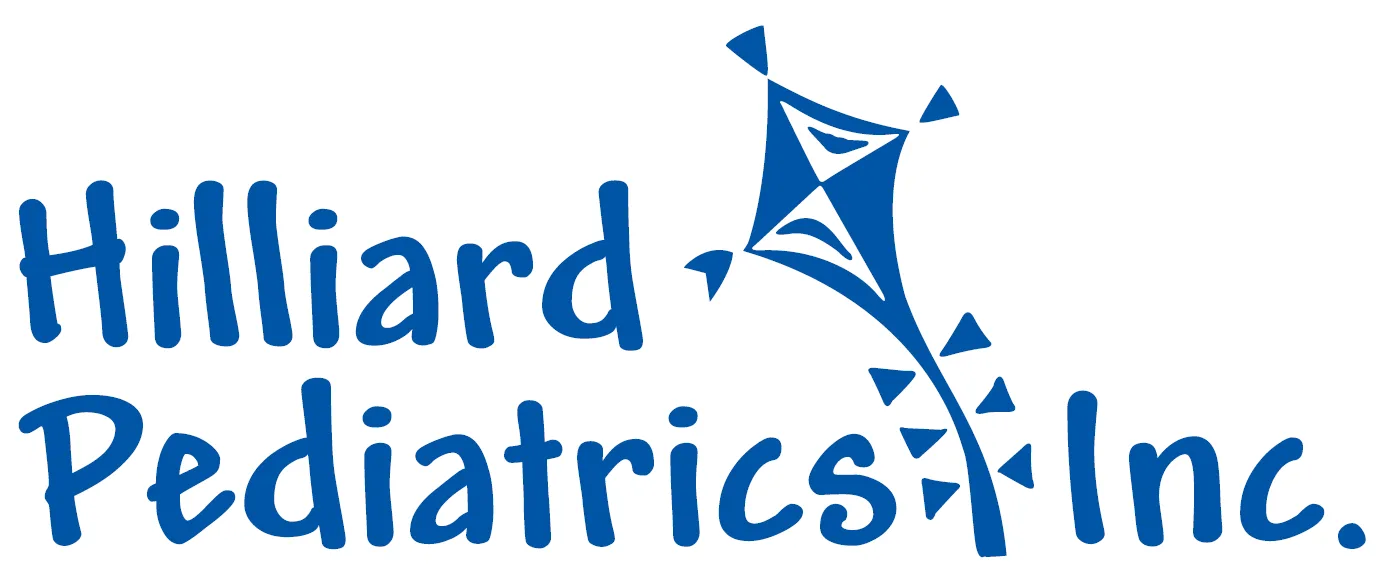Acne
Hilliard Pediatrics, Inc. - Dr. Tim Teller, MD
Introduction
Acne is a common skin condition involving red bumps, white heads, and black heads. It is most common during the teenage years. It most commonly shows up on the face, neck, back, and chest. Some teens have no problems with acne, while others suffer through quite a lot. Acne can look better or worse at times, sometimes without making much sense. Sometimes acne will look worse in the summer for some; other times, someone’s acne is worse in the winter. Anything that rubs sweat into the skin (hats, helmets, chin straps, shoulder pads, etc.) can make acne worse.
Diet and Acne
You have probably heard that certain foods cause acne. The truth is that some people find certain foods may make their acne worse, but for many teens no food will make their acne better or worse. If you do notice that chocolate, fatty foods, sugar, pizza, or fried foods consistently makes your acne worse, avoid or decrease how much you eat of that food. Most people with acne will not need to do this, however.
Acne Treatment
We treat acne in steps. If what we are using is working, we continue the medicine. If it does not work, we try different medications or treatments. Anything you use will usually take at least a few weeks to work, sometimes longer. Be patient! Don’t stop a treatment soon after starting it if things are no better. And some medications can make the acne look worse for a few weeks before things get better.
What not to do:
- Do NOT pick, scratch, pop, or squeeze pimples. This makes them more red, more swollen, and more likely to scar. It is hard to be patient, but the pimples will go away with time without touching them.
- Do NOT over wash your face. Acne can become worse if you over scrub or over clean the areas where your acne breaks out. It is best to wash once or twice a day with warm water and a mild cleaner. It is rarely helpful to use alcohol-based cleaners or to wash more frequently. If you do try an astringent or alcohol pads, do not use more than once a day. Many “acne scrubs” are too harsh and can make acne worse, rather than better.
- Do NOT give up too quick on a treatment. Many treatments take 6-12 weeks to really help the acne. And many prescription medications may clear your pores and bring the pimples out after a few weeks. This can make the acne look worse before things get better! Once you have gotten through this over 3-6 weeks, the skin often continues to look healthier with continuing the medication. So be patient!
- For girls, do NOT wear too much make-up if you suffer from acne. Look for products that say “non-comedogenic” and “non-acnegenic”, as these will be less likely to clog the pores and make acne worse. Oil-free, water-based make-up and moisturizers should be used. Remove your make-up each night with gentle washing. Oil-free foundation mixed with a little powder can act as a good cover-up.
What to do first:
- Clean the skin where the acne breaks out once or twice a day (cleaning more often is rarely helpful and can worsen the acne) with an acne wash, such as Neutrogena Oil-Free Acne Wash. The helpful acne washes have salicylic acid in them as this helps prevent future breakouts. Generic and store-brands of these cleansers usually work just as well as the name brand products.
What to do next:
- Continue to do the cleaning as before. Now add benzoyl peroxide. This product is available in different strengths (often 2.5, 5, and 10%) and in different forms (gels, lotions, and creams). The higher the strength, the more likely the medication is to work and the more likely it is to dry or irritate the skin. So for most people, we suggest you first try the lower strength (2.5 or 5%) lotions or gels. Apply a thin layer of the benzoyl peroxide over clean and dry skin once a day before bedtime. Apply it thoroughly over all the areas affected by the acne, not just the spots where you may have acne right now. If you do not see any results after a few weeks, move up to a higher strength or apply it twice a day (morning and night). Benzoyl peroxide can bleach hair, towels, and clothing. Let the benzoyl peroxide dry well after putting it on. This will decrease the chances of it bleaching your pillowcase. If you do have dryness, redness, or flaking while using benzoyl peroxide, use an oil-free moisturizer in the morning.
What's next?
- If you have done the above treatments and your acne is not better, we will often try prescription medications next. It is often very helpful to see you in the office for an appointment to best decide which medicine will be the best for your skin. All of the following medications have a similar chance of helping. It will be best to continue using the acne wash even when adding the prescription medication to your acne treatment. The side effects of all of the prescription creams, gels, or lotions are similar to benzoyl peroxide: dryness, redness, or flaking. If the medication causes these, use an oil-free moisturizer in the morning. The other thing to try is to try using the medication every other day to reduce the dryness, redness, or flaking. Note that insurance company coverage of these acne treatments is very different from one plan to another and these medications can be expensive.
- Common prescription medications we may have you use:
- BenzaClin Topical Gel (clindamycin, an antibiotic, and benzoyl peroxide) -- Apply at bedtime or each morning and at bedtime in a thin layer over all the areas affected by the acne. Apply after the skin is gently washed and patted dry. May bleach clothes or hair. Allow the gel to dry well on your skin before allowing the area to touch fabrics or hair.
- DUAC Gel (clindamycin and benzoyl peroxide) – Apply once a day in a thin layer over all the areas affected by the acne. Other instructions are the same as with BenzaClin.
- Benzamycin Gel (erythromycin, an antibiotic, and benzoyl peroxide) – Apply once or twice a day. Apply a thin layer over all the areas affected by your acne. Other instructions are the same as the BenzaClin.
- Retin-A (tretinoin) Micro, Cream, Gel, and Liquid – Apply at bedtime in a thin layer over all the areas affected by the acne. This medication can cause the skin to be more sun-sensitive. Regularly use a sunscreen.
- Differin (adapalene) Cream or Gel – Apply at bedtime to in a thin layer over all the areas affected by the acne. A pea-sized amount of Differin is all that is needed to treat your whole face each night. Using more will not help it work better.
- Epiduo Gel (adapalene and benzoyl peroxide) – Apply once a day. Wash your face with a gentle cleanser and pat your skin dry. Apply a thin layer to your acne-prone areas. A pea-sized amount will be all that you need for your entire face.
- Doxycycline (an antibiotic taken by mouth) 100mg capsules or tablets – Take one pill each morning and one each evening. Often takes 2 months to help and 4-6 months to know how well it will help. Commonly makes the skin more sun sensitive, so make sure that you use sunscreen. Can make birth control pills less effective (controversial – probably doubles the failure rate per year for birth control pills from 2 in 100 to 4 in 100).
- Tetracycline (an antibiotic taken by mouth) 500mg tablets – Taken twice a day, but must be taken on an empty stomach or it will not work. It can be taken ½ hour before or 2 hours after eating. Therefore I would try taking it ½ hour before breakfast and before bedtime (so no late snacks 2 hours before you take it). Can make your skin more sun sensitive, so use a sunscreen regularly. Tetracycline can make birth control pills less effective (see information under doxycycline). Discolors baby teeth.
What about Proactiv?
- Proactiv is a popular acne treatment that combines a number of different treatment “steps” into a package. Proactiv, like other acne treatments, often works well if it is used regularly. It has the same chance of causing the skin to the red and dry as the other acne treatments. Many of our patients feel that Proactiv is expensive, and if you are interested in a less expensive alternative to it, I would suggest: wash twice a day with a generic salicylic acid acne wash, apply the strongest generic benzoyl peroxide before bedtime that your skin can stand without drying out, and apply a generic oil-free moisturizer each morning.
What is Accutane?
- It is a powerful treatment taken by mouth for severe acne that is prescribed only by a dermatologist, is expensive, takes 4- 6 months to work, and has a lot of side effects. Accutane is not for everyone with acne, but can be a very effective treatment.
When to See a Dermatologist
The Dermatologist is the skin specialist. If someone’s acne is not responding well to treatment, we often recommend seeing the Dermatologist to assist us in improving the acne. Sometimes, just a visit or two with the specialist is needed and at other times more follow-up will be helpful.
Over the Counter Products
Oil-Free Moisturizers:
- Neutrogena Oil-Free Moisturizer
- Neutrogena Rapid Clean Acne Defense Lotion
- Olay Complete All Day Moisture Lotion
- All Right Oil-Free Lotion
- Baxter of California Oil-Free Moisturizer (for guys)
- Anthony Logistics Oil-Free Facial Lotion (for guys)
- Jack Black Oil-Free Lotion (for guys)
- Cetaphil Oil Control Moisturizer
Mild Soaps and Acne Washes:
- Neutrogena Oil-Free Acne Wash
- Neutrogena Facial Cleaning Bars
- Cetaphil Oil Control Acne Wash
- Lever 2000 Soap
- Dial Soap
- Purpose Gentle Cleansing Wash
- Purpose Gentle Cleansing Bar
Last Updated: 04/2019

